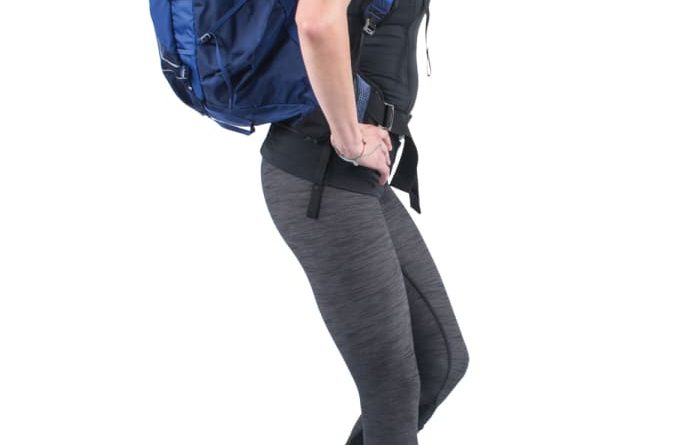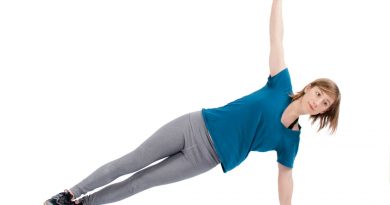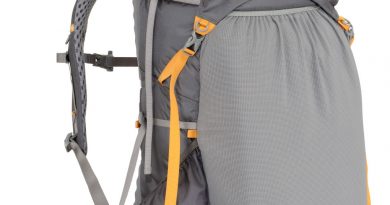3 Exercises to Injury-Proof Your Joints
Strengthen joints and banish sprains for good.
You’re only as strong as your weakest link, and for backpackers, that’s usually the joints. Connective tissues like tendons and ligaments are tougher to strengthen than muscle, and injuring them isn’t pretty: Tweaked knees, rolled ankles, and achy hips can be trip-enders. Improve your odds of a pain-free hike by doing these exercises three times a week.
Single-Leg Squat to Heel-Tap

What Step down to initiate eccentric contraction and simulate downhill motion.
Why Strengthen knees and quads without shortening muscles—or stressing joints.
Reps 15 (each leg) Sets 3 Rest 30 seconds
Stand on one leg on a 6- to 8-inch step or box with both legs straight.
Extend one foot and flex it so your foot makes a right angle with your shin.
With hips level, drop into a single-leg squat to lower your free foot to the floor. Your heel will be slightly forward of your standing foot.
Tap your heel to the floor, then rise slowly, keeping hips level and knees in line with ankles and hips. Repeat for 15 reps, then switch legs.
Make it harder.
Start with an empty pack and add 6 to 7 pounds each week. Work up to the weight you plan to carry on your next big trip.
Heel Raises

What Stay balanced while rising up on the balls of your feet.
Why Develop calf strength and ankle stability to thwart sprains.
Reps 30 Sets 3 Rest 30 seconds
Stand on the balls of your feet on a step or low box with your heels hanging off the edge. The soles of your feet should be parallel to the ground.
Raise your heels until your calf muscles are fully contracted. Maintain even weight on each leg. Avoid rolling to the outside edges of your feet (if you can’t see the inside of your heel when you look down, you’re doing it right).
Lower until your feet are parallel with the floor. Repeat.
Make it harder.
Do them on one leg. Easy? Add a pack loaded with 5 to 10 pounds (add 5 pounds each week until you reach your goal pack weight), or add five reps each week until you can do 50.
Boulderfield Step-Ups

What Simulate grueling climbs with repeated box steps.
Why Improve hip strength and overall alignment to keep knees and ankles in control.
Reps 15 (each leg) Sets 3 Rest 30 seconds
Stand facing a 6- to 8-inch box . Step onto it with your left leg, pushing through the sole of your foot to a one-legged stand (engage your outer left hip to keep your left knee from collapsing inward).
Follow through with your right leg to a 90-degree bend at the hip and knee.
Pause and hold the raised leg at 90 degrees for a count of two, then step down.
Make it harder.
Add a loaded pack. Still too easy? Raise the step a few inches at a time, up to 3 feet high, or top the box with a pillow—simulating unstable ground will engage and strengthen outer ankle muscles.
Skater Hops

What Maintain control during wide, side-to-side hops.
Why Train your ankle to resist sprains and respond quickly to awkward landings.
Reps As many as possible in 2 minutes
Sets 3 Rest 30 seconds
Set two markers (tape, cones, etc.) on the floor about 3 feet apart.
Stand on your left foot at the left marker. Leading with your right foot, leap laterally toward the right marker. Land on your right foot with the left hovering. (Be sure to land with your hip in line with your knee and your knee over your toes.)
Pause and balance on your right foot, then hop back, leading with your left.
Make it harder.
Go faster, widen the distance between your markers, or increase the time per set by 15 seconds each time you do the circuit. Alternatively, do the exercise on gravel or sand to work smaller stabilizing muscles.
You’re Doing it Wrong: Falling Out of Alignment
The natural human tendency is to lean back when standing, pushing the hips forward and the rib cage back. In the gym and on the trail, keep your chest, hips, ankles, and knees stacked vertically to help prevent meniscus stress, lateral hip pain, ankle injuries, and lower back pain. For example, if you let your knee drop out of alignment during skater hops (or while stepping down off a boulder), you stress both your knee and ankle, making future sprains more likely. Instead, try to keep the center of your kneecap tracking over your second toe. It’ll make the exercise harder, but you’ll reap the benefits of improved strength and stability.
The article was originally seen at https://www.backpacker.com/skills/injury-proof-your-joints
Originally posted 2018-06-05 11:40:22.




